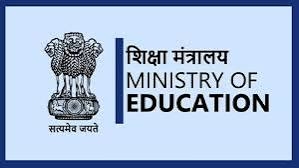Three-Language Formula and NEP 2020

- 27 Feb 2025
In News:
The Three-Language Formula (TLF) under the National Education Policy (NEP) 2020 has sparked controversy, particularly with Tamil Nadu opposing its implementation. The Union government’s withholding of ?573 crore under the Samagra Shiksha Abhiyan (SSA) for non-compliance has intensified the Centre-State standoff.
What is the Three-Language Formula?
- NEP 2020 mandates students learn three languages, of which at least two must be Indian languages.
- States, schools, and students have flexibility to choose the languages, with no imposition from the Centre.
- The medium of instruction should be the home language, mother tongue, or regional language at least until Grade 5, preferably till Grade 8 and beyond.
- Foreign languages like French, German, and Japanese can be offered at the secondary level.
Historical Background:
- Kothari Commission (1964–66) proposed the Three-Language Formula to promote national unity and linguistic diversity.
- Formally adopted in the NPE 1968 under PM Indira Gandhi, reaffirmed in 1986 (Rajiv Gandhi), and revised in 1992 (Narasimha Rao).
- Article 351 of the Constitution mandates the Union to promote the spread of Hindi.
- Tamil Nadu has historically rejected Hindi imposition, favoring a two-language policy (Tamil and English) since CM C.N. Annadurai’s tenure.
Benefits of the Three-Language Formula (UNESCO-backed):
- Improved Learning:
- Multilingual students show better cognitive development and academic performance.
- Education in the mother tongue improves comprehension and parental engagement.
- Social Inclusion:
- Helps include marginalized communities and preserve indigenous languages.
- Promotes unity in diversity and national integration.
- Economic & Environmental Gains:
- Preserves traditional ecological knowledge.
- Example: Switzerland attributes 10% of its GDP to its multilingual heritage.
Challenges and Criticisms:
- Politicization: Language policies can fuel regionalism and identity politics.
- Educational Burden: Students, especially from monolingual or low-literacy households, may struggle with an extra language.
- Infrastructure Gaps: There’s a shortage of trained language teachers.
- Diverse States: Linguistically complex states like Nagaland may face logistical issues.
- Technological Alternatives: Tools like AI translators reduce the need for multilingual proficiency.
Way Forward:
- Focus on quality of education before adding languages.
- Promote cooperative federalism—respecting state autonomy while aligning with NEP goals.
- UNESCO-aligned implementation:
- Use sociolinguistic data for planning.
- Develop learning materials in regional languages.
- Train bilingual teachers.
- Encourage community participation in language education.
